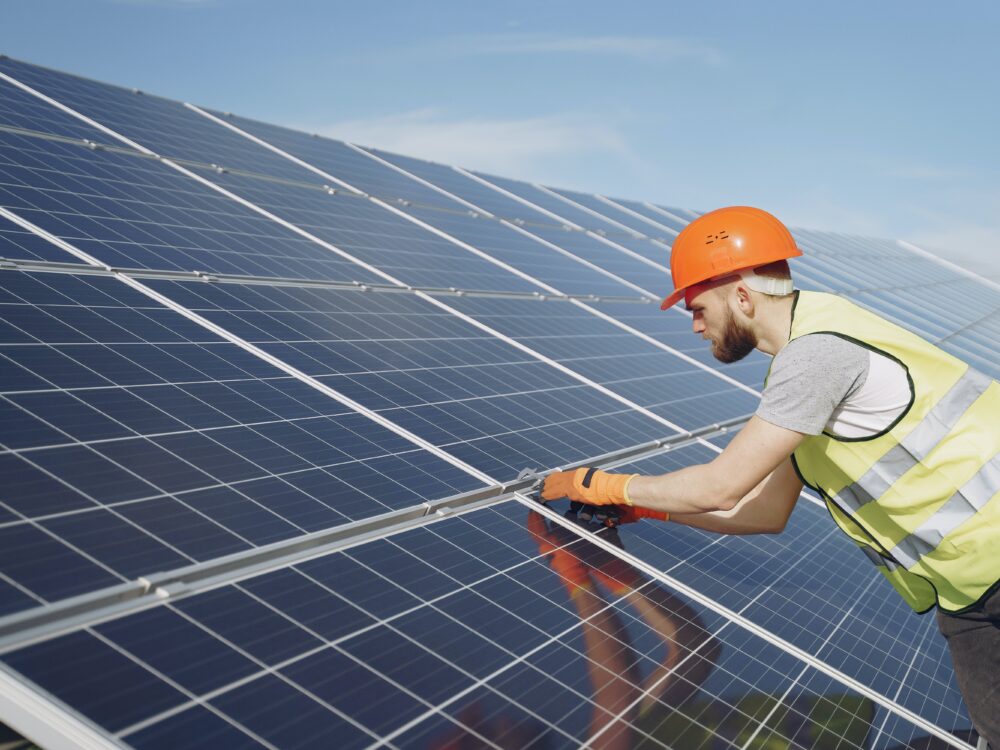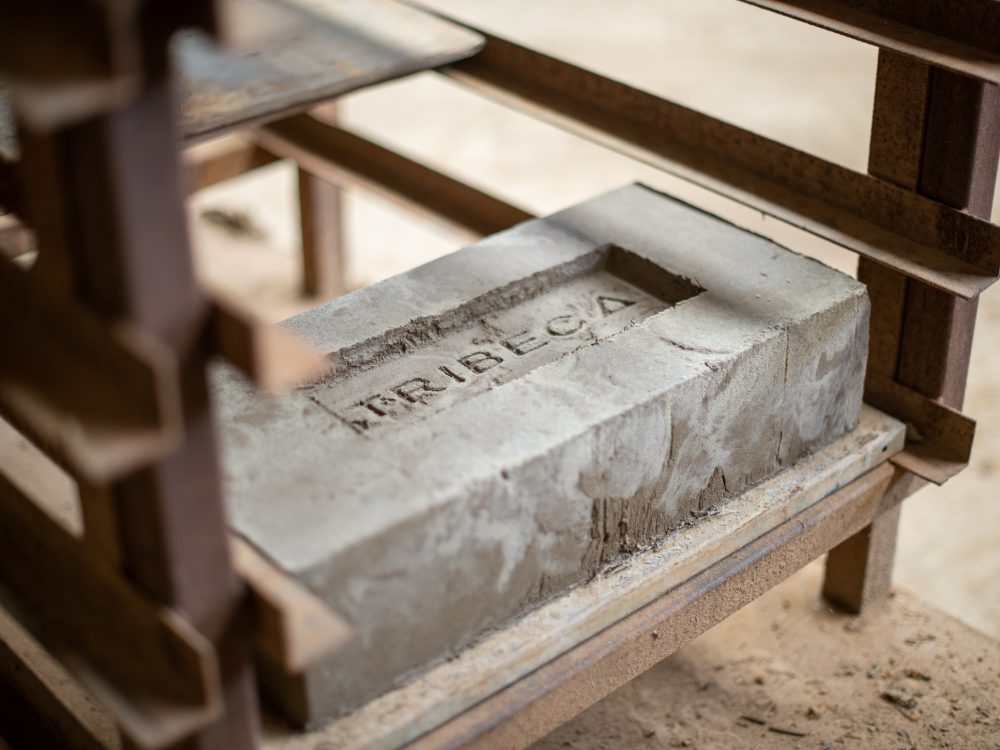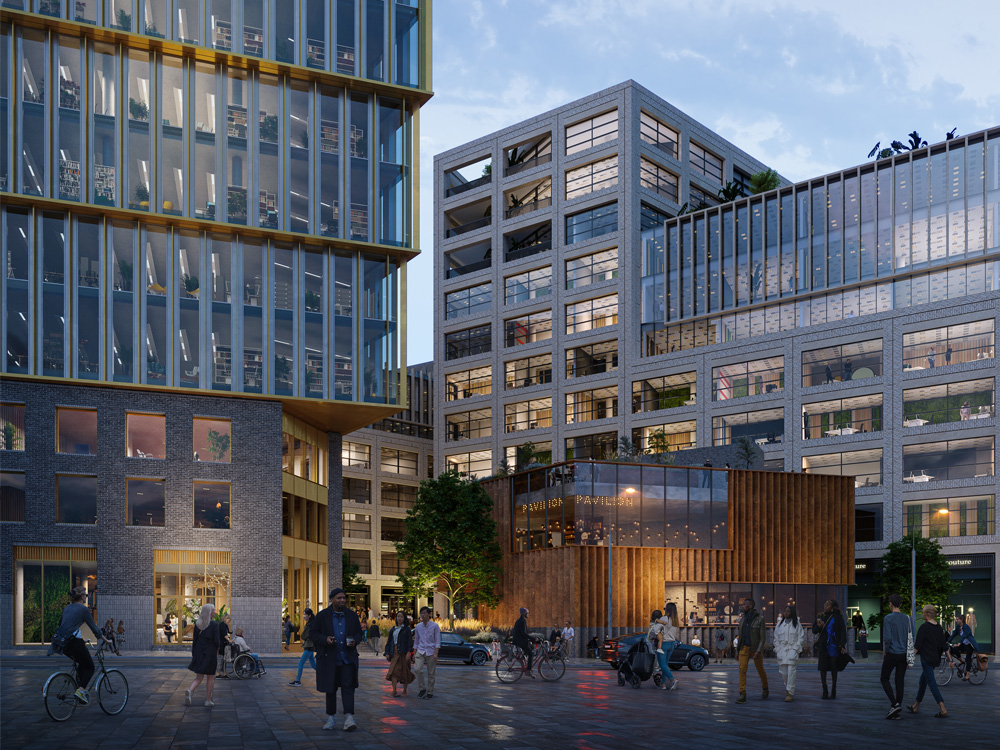A whole life carbon approach
Buildings produce around 40% of global carbon emissions, of which 28% come from operational carbon and 11% from embodied carbon. Decarbonising the property market will be essential to meet the UK Government's 2050 net zero carbon target.
For new developments in the capital, the London Plan calls for whole life carbon assessments with the aim to reduce operational and embodied carbon emissions to net zero. The priority is to minimise the demand for energy and materials, with offsetting through accredited schemes being the last resort for residual emissions that cannot be eliminated.

The Tribeca whole life carbon strategy is informed by best practice guidance set by the Royal Institute of British Architects (RIBA), The London Plan, LETI Net Zero Operational Carbon, and the UK Green Building Council (UKGBC). The commitment to designing green and energy efficient buildings has been a priority from the get go, and the development has been designed to minimise carbon emissions at all stages, which includes reducing construction impacts, reducing operational energy use, sustainable and renewable energy supply and offsetting any remaining carbon.
Below, we set out how the ambitions and strategies for the construction and in use stages of the Tribeca development.
Reducing construction impacts
A lean design approach has been adopted to reduce material use from a structural and architectural perspective. Superfluous materials and finishes have been designed out and the façade optimised to remove overly complex back structures. Flexible floorplans that can be subdivided to suit different occupiers will allow for change of use without the need for significant reconstruction and new fit-outs for every new tenancy.
The Reef Group is commitment to recycle or reuse 95% of the waste from existing buildings on the site, and are currently diverting 99% of waste from landfill. Existing high-value materials from the existing buildings on the site are salvaged and reused. Crushed demolition material is reused in the piling mat and excavated subsoil has been used to manufacture low-carbon Strock earth blocks to clad the interior of the basements.
The existing steel will be installed as structural elements during temporary works, and as permanent building components in the new development; the central Pavilion will be constructed entirely from salvaged steel from the site. Surplus steel is being sent to a local supplier that processes, remanufactures and certifies the material for reuse in other schemes, and surplus concrete is reused as aggregate in other products.
The materials and components that cannot be reused onsite will be offered to other projects, including marble stone tiles, sinks, toilets, electronic appliances, kitchen units, furniture, interior fittings, backup generators, batteries, UPS units, plant and accessory equipment.
Upfront carbon has been reduced by prioritising components and materials that are low-carbon or contain a higher proportion of recycled content. Local materials will be prioritised where possible to reduce emissions from transportation.
The scheme specifies ground granulated blast furnace slag (GGBS) concrete which uses a byproduct from the iron industry and contains 20% recycled content, and the new steel components will have 80% recycled content. Second hand and upcycled furniture and fittings will be used to fit out the commercial areas.
A long-life approach to materials and equipment will reduce the need for replacement and repairs throughout the lifetime of the buildings.

Reducing operational impacts
The operations of buildings account for around 30% of all emissions, primarily from heating, cooling and electricity use. Tribeca will be an all-electric development with no fossil fuel use. A low carbon heating and cooling system will combine air source heat pumps with heat recovery, which extracts heat from the outgoing air to preheat incoming air.
Photovoltaics will be maximised on available roof space to generate onsite renewable energy. This will go some distance to provide for the development, but the aspiration is for the majority of the energy demand to be met by 100% renewable energy procured through a Power Purchase Agreement (PPA) with a local supplier. The PPA would fund new sources of renewable energy production in the UK that would not have been established otherwise.
To optimise energy use, occupant sensing and automated building management systems will be integrated that respond to occupier patterns.
Reef together with the service development team are introducing green leases to set a high sustainability benchmark for occupiers and to improve the performance of the building. The green leases will require tenants to purchase power via green sources only and report quarterly on energy consumption.
Monitoring will be an essential part of the whole life carbon strategy and a post occupancy evaluation will be undertaken over a three year period to assess energy use in order to reduce consumption and optimise performance. Annual carbon balance calculations will be undertaken, and the annual renewable energy generation will be reported and verified in use for at least the first five years of operation.
The path to whole life net zero carbon is multifaceted and complex. It relies on smart and lean designs, sustainable construction and material use, and efficient operation. As such, it is a team effort, realised by the developer and the occupier. The ambitions for the Tribeca development are high and efforts to reduce emissions and environmental impacts will evolve over time, as the scheme matures and the market evolves.


